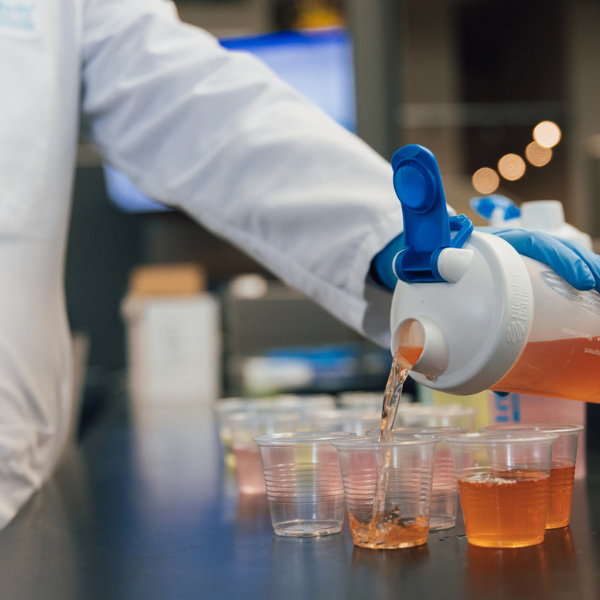 Ginger has exploded as a flavor and a functional ingredient. Consumers are craving spicy and exotic flavors, so they’re embracing the heat that comes from real ginger juice. Ginger is also one of the most versatile flavors. It can be paired with sweet or savory, and works in products from nearly every category like soda, coffee, tea, juice, enhanced water, and functional beverages. The health and wellness movement is another reason for ginger’s growth because there are several inherent benefits associated with it like aiding with digestion and alleviating nausea. We saw it everywhere at Expo West in products like teas, sparkling coffee, kombuchas, lattes, wellness shots, juices, candy, and vitamins, so we expect to see it popping up more in grocery aisles and on menus.
Ginger has exploded as a flavor and a functional ingredient. Consumers are craving spicy and exotic flavors, so they’re embracing the heat that comes from real ginger juice. Ginger is also one of the most versatile flavors. It can be paired with sweet or savory, and works in products from nearly every category like soda, coffee, tea, juice, enhanced water, and functional beverages. The health and wellness movement is another reason for ginger’s growth because there are several inherent benefits associated with it like aiding with digestion and alleviating nausea. We saw it everywhere at Expo West in products like teas, sparkling coffee, kombuchas, lattes, wellness shots, juices, candy, and vitamins, so we expect to see it popping up more in grocery aisles and on menus.
Here are key considerations when using ginger in your product:
- From a taste standpoint, ginger has a very distinct pungent, warm, woody, citrusy taste profile with a spicy undertone. Using it as an ingredient or flavor component in any beverage can be tricky because the strong taste and bite of ginger needs to be balanced by other components, so it’s very rarely used as the standalone flavor. Ginger is more often combined with a citrus flavor, or other exotic fruits like apricot, pear, mango, pomegranate, or some florals like jasmine. Our flavor team has also paired it successfully with rosemary and cardamom.
- Ginger can be a challenging ingredient to develop because of its physical form. It’s a rhizome, so part of the plant that grows under the ground from the root. Once harvested, it has to be processed to be able to be used. The first step starts with the drying. The dried rhizomes are either further dried to make a powdered form or juiced, or taken as starting material for different flavoring material production.
- For beverages using ginger flavor, the dried ginger is processed into an oleoresin or distilled into an essential oil. The flavor is created from an essential oil or the oleoresin of ginger (typically the latter for non-alcoholic beverages), but there are several processes ginger must go through once it’s dried to make it water soluble.
- If you’re using ginger juice there are additional processing concerns. Ginger needs to be heat processed, which results in more cooked off-notes in addition to the already pungent nature of ginger.
Ginger isn’t going to lose momentum, and you’ll soon be seeing it in products by mainstream brands in applications like juices (especially lemonades), cold brew coffee and tea, and in probiotic beverages. Ginger will also be used in more novel applications like wellness shots for digestive health, superfood lattes, shrubs and drinkable veggies.
If you’re interested in developing a beverage with ginger, contact us at thedrinktank@imbibeinc.com.




